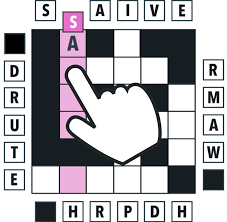
Word Slide is an engaging and innovative word game that challenges players to form words by sliding letter tiles on a grid. Combining elements of classic word search games and sliding puzzles, Word Slide offers a fresh take on word formation and spatial reasoning. Here’s a comprehensive look at what makes Word Slide a captivating game:

Objective: The primary goal of Word Slide is to create valid words by sliding adjacent letter tiles into position. The words can be formed horizontally, vertically, or diagonally, depending on the game's specific rules.
Grid and Tiles: The game typically features a grid of varying sizes (e.g., 4x4, 5x5) populated with letter tiles. Each tile contains a single letter, and players must manipulate these tiles to form words.
Sliding Mechanism: Unlike traditional word games where letters are fixed, Word Slide allows players to slide entire rows or columns of tiles. This sliding mechanism requires players to think several moves ahead, similar to chess or other strategic games.
Word Formation: Words are formed when letters align in a continuous sequence. Once a word is successfully created, the tiles involved often disappear, and new tiles may fall into place, introducing a dynamic and ever-changing puzzle landscape.
Levels and Challenges: Word Slide often features multiple levels with increasing difficulty. Early levels might have straightforward words and simple grids, while later levels introduce larger grids and more complex word challenges.
Timed Mode: Some versions of the game include a timed mode, where players must form as many words as possible within a given time limit. This mode tests both quick thinking and fast sliding skills.
Puzzle Mode: For players who prefer a more relaxed experience, puzzle mode allows for thoughtful consideration without the pressure of a ticking clock. Each move can be carefully planned to maximize word formation.
Special Tiles and Power-ups: To add variety and excitement, Word Slide may include special tiles (e.g., wildcard letters, bombs that clear surrounding tiles) and power-ups (e.g., shuffle the board, hint for possible words). These elements can help players overcome challenging levels.
Using Mouse and Keyboard.
there are many other games developed under Connections NYT, let's try them out